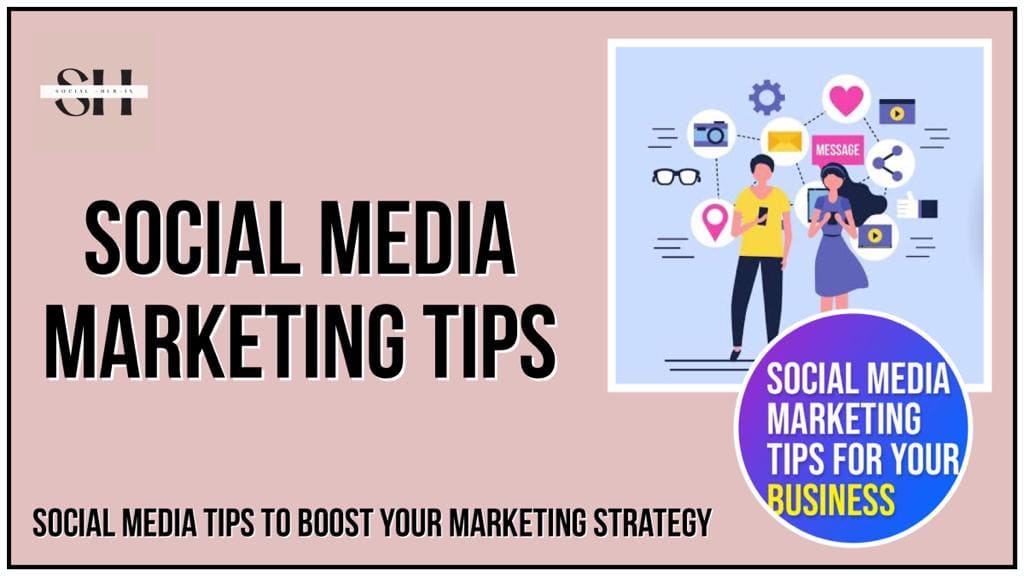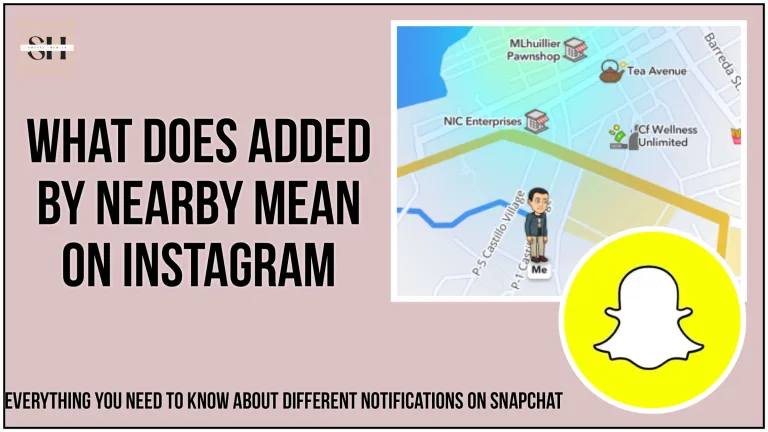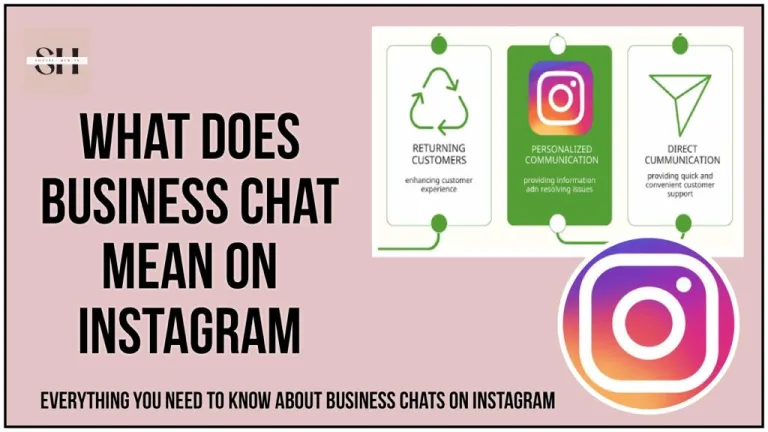In the dynamic landscape of today’s digital world, establishing a strong online presence is not just an option, it’s a necessity. To thrive in the realm of social media, one must navigate the ever-evolving channels, algorithms, and trends. Welcome to a comprehensive guide on the best social media marketing tips, where we will unveil the strategies and techniques that can help you boost your online presence effectively. From crafting engaging content to decoding the secrets of audience engagement, this article is your roadmap to success in the ever competitive world of social media marketing.
So, let’s embark on this journey together and uncover the insights that will captivate your audience and keep you scrolling to the very end. Your online presence is about to receive a significant boost, and the adventure begins now!
Social Media Marketing Tips For Boosting Engagement On Social Media
1. Define Your Goals
- Be specific about your objectives, whether it’s brand awareness, traffic, or sales.
- Set realistic and measurable goals using Key Performance Indicators (KPIs) to track progress.
2. Learn About Your Target Audience
- Understand audience demographics, including age, gender, location, and interests.
- Identify their questions, concerns, and problems to create content that offers solutions.
3. Select Your Social Media Platforms
- Focus on quality over quantity by concentrating efforts on platforms aligned with your goals.
- Choose platforms favored by your demographic, as different platforms cater to different audiences.
4. Build a Winning Game Plan
- Document your strategy, including content types and posting frequency.
- Tailor content to each platform’s unique features and consider relevant social media platforms.
5. Set Up a Social Media Content Calendar
- Use content calendars and scheduling tools to organize and automate your posting schedule for consistency.
- Plan ahead and schedule posts in advance to ensure a steady flow of content.
6. Use the Art of Storytelling
- Engage your audience through storytelling by crafting compelling narratives that emotionally resonate with them.
7. Humanize Your Brand
- Showcase the human side of your brand by going beyond products. Introduce your team and share your office culture and values.
8. Use Emoticons
- Convey emotion and context by using emoticons to add emotional depth to your messages.
9. Let the Tools Empower Your Strategy
- Automate processes with social media tools, such as scheduling tools, to streamline posting.
- Use analytics for data-driven decisions by monitoring key metrics for insights and decision-making.
10. Embrace Your Mistakes
- Acknowledge and rectify mistakes. Apologize for errors and transparently share how you’re improving.
11. Optimize Your Post Frequency
- Determine the right timing to post based on audience availability and behavior.
- Tailor posting schedules to audience availability, adapting to when your audience is most active.
12. Cut Back on the Number of Hashtags
- Use 2-3 relevant, high-volume hashtags. Focus on quality over quantity to avoid overwhelming your audience.
13. Treat Each Social Channel Uniquely
- Customize content for each platform, recognizing that each has unique features and audience expectations.
14. Share Quality Visual Content
- Leverage high-quality visuals, as images and videos attract more engagement and are more memorable.
15. Dive Deep into Social Media Analytics
- Regularly review metrics to monitor key performance indicators and audience engagement.
- Use analytics for data-driven decisions, making informed choices based on data analysis.
16. Leverage Influencer Marketing
- Collaborate with influencers who have a significant following in your niche.
- Plan and execute campaigns that leverage the influence and reach of your chosen influencers.
17. Monitor Social Listening
- Use social listening tools to keep an ear on conversations about your brand and industry.
- Respond and engage by addressing comments and participating in relevant conversations.
18. Engage in User-Generated Content
- Encourage user-generated content by motivating customers to create and share content related to your brand.
- Share and highlight user-generated content to build community and trust.
19. Run Social Media Advertising
- Invest in paid ads to reach a larger, targeted audience.
- Conduct A/B testing to experiment with different ad types, audiences, and ad copy for optimal results.
20. Create Compelling Visuals
- Invest in design to develop eye-catching visuals that align with your brand’s aesthetic.
- Incorporate video content, which tends to receive high engagement.
21. Collaborate with Partnerships
- Partner with other brands to collaborate with complementary businesses and expand your reach.
- Co-create content that appeals to both your audiences.
22. Encourage Community Engagement
- Foster community interaction by building a community around your brand where customers engage with each other.
- Respond promptly to comments and messages to show you value your audience’s input.
By following these detailed steps, you can enhance your social media marketing strategy and achieve better engagement and results.
Effective Social Media Strategies
Creating an effective social media strategy is crucial for each platform you use. It’s essential to recognize the unique dynamics of each platform, ensuring your content is tailored and engaging. To guide your strategy, ask key questions: Why have I chosen this platform? Who is my target audience? What brand message do I want to convey? What content resonates best here, and how can I make it stand out?
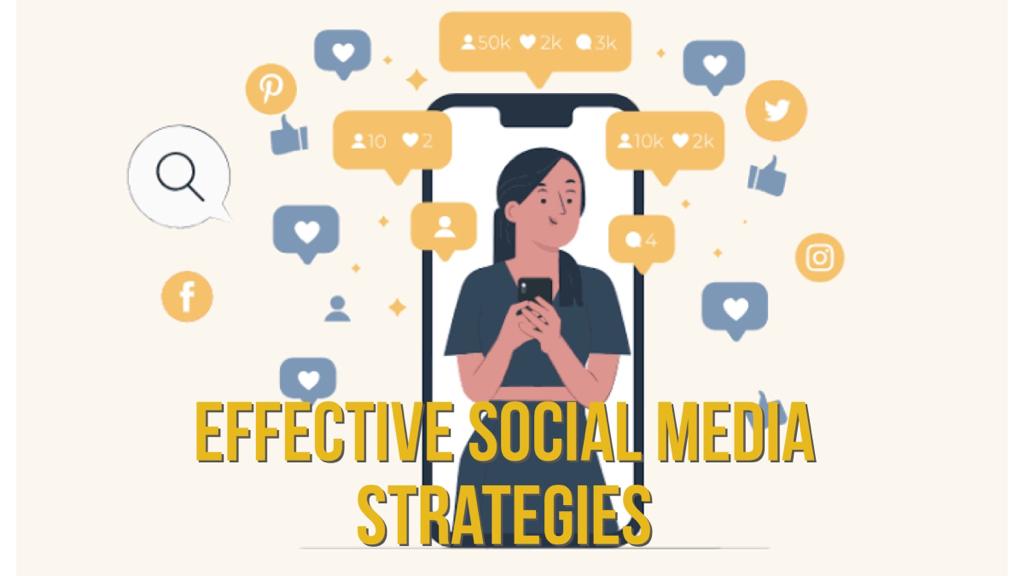
1. Crafting a Tailored Strategy
Each Platform, a Unique Approach: It’s crucial to understand that every social media platform has its own distinct personality. To create engaging content, it’s essential to recognize what works best on each platform and align it with your overarching strategy.
Key Questions to Shape Your Strategy:
- Purposeful Platform Use: Begin by understanding why you’ve chosen a specific platform and how it aligns with your goals.
- Audience Insight: Determine who your target audience is on this platform and what appeals to them.
- Brand Messaging: Define the core message you want to convey and how it resonates within the platform’s context.
- Tailoring Content: Create content that is uniquely tailored to fit the platform’s nuances and capture the audience’s attention.
2. Embracing Consistency
A Rule of Thumb – Regular Posting: Regardless of the platform, maintaining consistency in your posting schedule is a solid rule of thumb. Developing a content calendar for each platform can help you keep things on track over an extended period.
Consistency Checkpoints:
- Brand Image: Ensure that your brand image remains consistent across all your social media platforms.
- Message Alignment: Consistently convey your brand message, reinforcing your identity.
- Frequency Matters: The frequency of your posts should align with the platform’s best practices.
- Strategic Hashtags: Use hashtags consistently and strategically to improve discoverability.
Starting Fresh? Quality Over Quantity: For businesses new to social media, quality should outweigh quantity. It’s often more effective to dedicate resources to posting exceptional content on a couple of platforms rather than spreading yourself thin across numerous platforms.
3. Crafting Compelling Content
Standing Out in the Crowd: In the era of overflowing social media feeds, creating exceptional content is the key to capturing attention.
Ingredients of Great Content:
- Newsworthiness: Craft content around topics that are considered newsworthy, such as timely events, proximity, conflict, human interest, and relevance.
- Visual Brilliance: Utilize captivating visuals – clear static images with minimal text, engaging GIFs, and attention-grabbing videos.
- Human Touch: Showcase the people behind your brand. It’s a powerful way to introduce the faces behind the logo and connect with your audience.
- Storytelling Magic: Leverage storytelling as a tool to engage your audience. It allows you to convey your message without coming across as overly promotional.
- Trend Relevance: Stay updated with current digital and societal trends to remain relevant. However, always ensure that these trends harmonize with your brand’s identity.
4. Cultivating Engagement
Building a Community: Engaging with your followers is an essential part of building a community around your brand. It fosters a sense of approachability and personability.
Engagement Tactics:
- Responsive Interaction: Show your audience you value their input by promptly liking and responding to comments.
- Live Connections: Go live to connect with your audience in real-time, giving a personal touch to your interactions.
- Interactive Content: Create polls, quizzes, and posts that encourage conversations and initiate meaningful discussions.
- Content that Sparks Conversations: Develop content that naturally leads to conversations and engagement.
5. Analyzing Performance Metrics
Delving into the Data: Deep-diving into social media analytics is the cornerstone of building a robust online brand presence. Most social media platforms offer valuable insights, especially for business accounts.
Leveraging Data Insights:
- Performance Evaluation: Regularly review metrics such as follower growth, post engagement, and reach to evaluate your strategy’s effectiveness.
- Data-Driven Decisions: Use the data and statistics to make informed decisions and fine-tune your social media strategy for enhanced performance and results.
How To Increase Reach With Social Media Ads

Increasing your reach with social media ads can significantly boost your brand’s visibility and engagement. Here’s a step-by-step guide on how to achieve this:
1. Define Your Target Audience:
- Identify the specific demographics, interests, behaviors, and locations of your ideal audience.
- Use the targeting features provided by the social media platform to narrow down your audience. This can include age, gender, interests, and more.
2. Choose the Right Social Media Platform:
- Select the platform that aligns best with your target audience and your advertising goals.
- Different platforms may perform better for different types of businesses, so choose wisely.
3. Craft High-Quality Content:
- Design visually appealing and engaging ad creatives that align with your campaign goals.
- Consider using compelling images or videos, concise and persuasive ad copy, and a clear call to action (CTA).
4. Set Clear Objectives:
- Clearly define what you want to achieve with your ads, whether it’s brand awareness, website traffic, lead generation, or sales.
- Your objectives will guide the structure and content of your ads.
5. Optimize Ad Placement:
- Choose between automatic placements or manual placements to control where your ads appear.
- Monitor performance and adjust placements to focus on areas delivering the best results.
6. Allocate a Budget:
- Determine your ad budget, keeping in mind the potential reach and engagement you want to achieve.
- Social media platforms offer options to set daily or lifetime budgets.
7. Schedule Your Ads:
- Plan when your ads will run, considering your target audience’s active hours.
- Use scheduling to optimize the timing of your ad delivery.
8. Implement A/B Testing:
- Create variations of your ad to test different elements, such as headlines, images, and CTAs.
- Continuously monitor the performance of these variations and refine your ad based on the results.
9. Monitor and Analyze Performance:
- Regularly review the performance of your ads using the platform’s analytics tools.
- Track metrics like reach, impressions, click-through rate (CTR), and conversion rate to gauge effectiveness.
10. Adjust and Optimize:
- Use the insights gathered from analytics to make informed adjustments to your ads.
- Experiment with different ad formats and audience targeting to find the most successful combinations.
11. Utilize Retargeting:
- Implement retargeting campaigns to re-engage users who have previously interacted with your content or website.
- This can increase reach among an audience that is already familiar with your brand.
12. Leverage Lookalike Audiences:
- Use lookalike audience targeting to find users who share similarities with your existing customers.
- This can expand your reach to new, potentially interested prospects.
13. Engage with Comments and Messages:
- Be responsive to comments and messages generated by your ads to foster engagement.
- Answer questions and address concerns promptly to build a positive relationship with your audience.
14. Experiment with Different Ad Formats:
- Social media platforms offer various ad formats, including image ads, video ads, carousel ads, and more.
- Test different formats to see which resonates best with your audience.
By following these steps and continuously optimizing your social media ad campaigns, you can effectively increase your reach, connect with your target audience, and achieve your marketing objectives.
How Can We Benefit From Optimizing Social Media Profiles
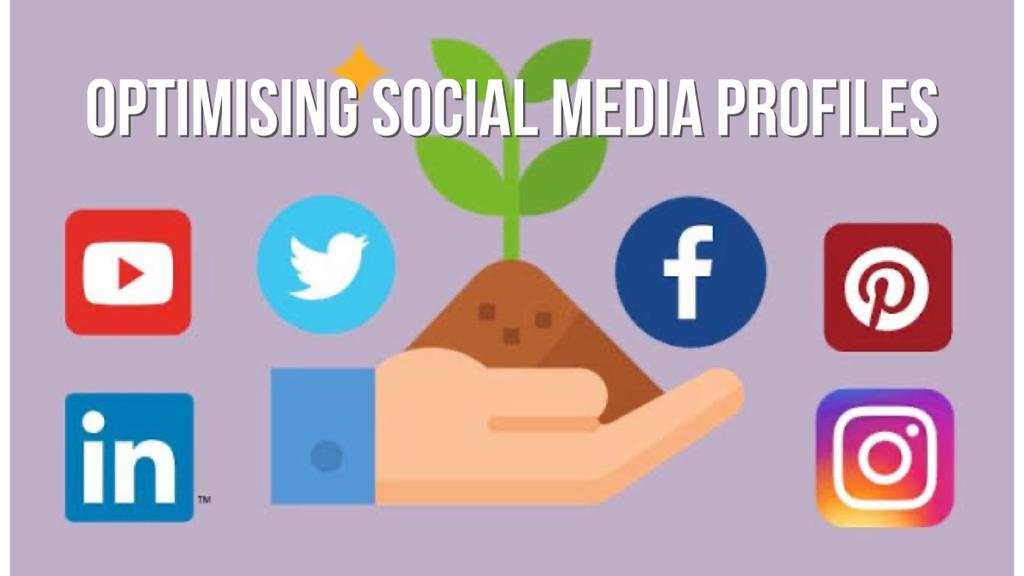
| Benefits of Optimizing Social Media Profiles |
|---|
| 1. Improved Visibility and Discoverability |
| – Enhanced search engine and platform visibility |
| – Easier for users to find and connect with you |
| 2. Enhanced Brand Image |
| – Conveys professionalism and consistency |
| – Strong brand presence and recognition |
| 3. Increased Engagement |
| – Attracts more followers and interactions |
| – Encourages users to engage with your content |
| 4. Better Audience Targeting |
| – Target specific audiences effectively |
| – Reaches people interested in your offerings |
| 5. Stronger Credibility and Trust |
| – Establishes trust and credibility |
| – Encourages trust and engagement |
| 6. Improved User Experience |
| – Provides a better user experience |
| – Makes it easy for users to understand |
| 7. Increased Website Traffic |
| – Drives traffic to your website or landing pages |
| – Enables users to explore your website |
| 8. Better Lead Generation |
| – Generates leads through contact info and CTAs |
| – Encourages users to take desired actions |
| 9. Audience Insights |
| – Offers valuable data about your audience |
| – Helps understand audience behavior and preferences |
| 10. Competitive Advantage |
| – Sets you apart from competitors |
| – Demonstrates commitment to online presence |
| 11. Improved Search Engine Ranking |
| – May lead to better SEO and organic traffic |
| – Social profiles can appear in search results |
| 12. Networking and Partnership Opportunities |
| – Attracts potential collaborators and partners |
| – Opens doors to beneficial collaborations |
How Often Should We Post On Social Media
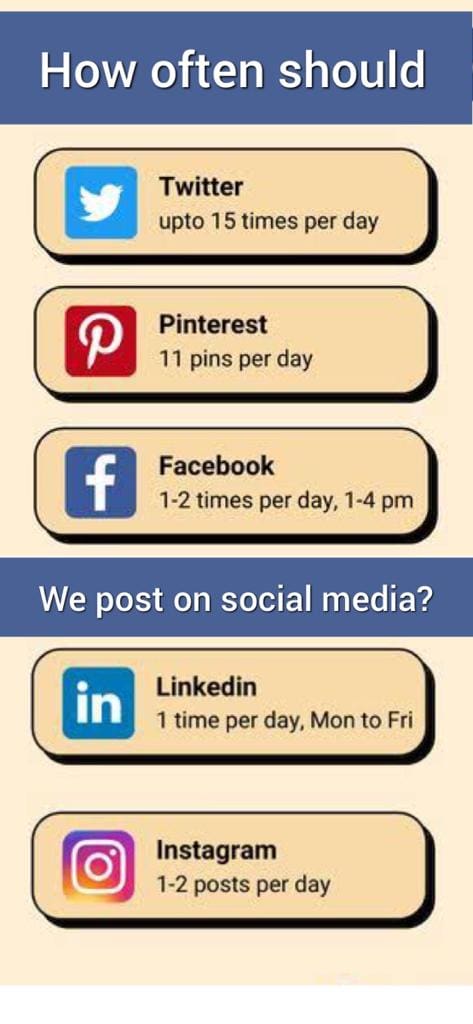
The ideal posting frequency on social media can vary depending on several factors, including your audience, platform, industry, and resources. There’s no one size fits all answer, but here are some general guidelines for different social media platforms:
1. Facebook:
- On Facebook, posting 3 to 10 times per week is a good starting point.
- Aim for at least 1 post every weekday to maintain consistency.
2. Twitter:
- Twitter is a high-frequency platform. It’s common to post multiple times a day.
- Some brands tweet 3-5 times a day, while others may post more frequently.
3. Instagram:
- For Instagram, consistency is key. Posting at least once a day is a good practice.
- Depending on your brand and content, you may even post 2-3 times a day.
4. LinkedIn:
- LinkedIn is more business-focused. Posting 2-5 times a week is a good range.
- Focus on sharing professional and industry-related content.
5. Pinterest:
- Pinterest is known for its evergreen content. Pinning 5-30 times a day is common.
- It’s about building a strong presence over time.
6. TikTok:
- TikTok thrives on frequent, short-form video content. Daily or multiple posts daily are common.
- Consistency and creativity are crucial.
7. YouTube:
- YouTube content tends to be less frequent but more in-depth.
- Weekly or bi-weekly video uploads are common.
Here are some additional tips:
- Prioritize quality over quantity. It’s better to post less often with high-quality content than to spam your audience with low-quality posts.
- Understand your audience. Monitor engagement and response to determine the best posting schedule. You may discover specific days and times when your audience is most active.
- Use social media scheduling tools to plan and automate posts. This can help maintain consistency without being overwhelmed.
- Tailor your posting frequency to your specific goals. For example, if you’re running a special campaign, you might increase your posting frequency temporarily.
- Experiment and adapt. Social media algorithms and user behavior change, so regularly assess your posting frequency and content performance.
Ultimately, the key is to find a posting frequency that works for your brand, resonates with your audience, and aligns with your goals. It’s also important to track your analytics to see how your posts are performing and adjust your strategy accordingly.
FAQs On Social Media Marketing Tips
1. What is social media optimization (SMO)?
- Social media optimization, or SMO, refers to the process of enhancing your social media profiles and content to increase visibility, engagement, and overall performance on social platforms.
2. Why is it important to optimize social media profiles?
- Optimizing social media profiles is essential for improving visibility, building credibility, engaging with the audience, and achieving specific objectives, whether personal or business-related.
3. How often should I post on social media?
- The ideal posting frequency varies by platform, audience, and goals. Posting quality content consistently is more important than posting frequently. Guidelines are provided for each major platform.
4. What are the benefits of optimizing social media profiles?
- Optimizing profiles can improve visibility, enhance brand image, increase engagement, target the right audience, and build trust. It can also drive traffic to websites and generate leads.
5. How can I create an effective social media strategy?
- An effective strategy involves setting clear goals, understanding your target audience, selecting the right platforms, planning content, using storytelling, and tracking metrics.
6. What is the importance of engaging with followers on social media?
- Engaging with followers builds a sense of community, enhances the brand’s personability, and encourages interactions. Responding to comments, live streaming, and creating polls are effective ways to engage.
7. What should I consider when creating engaging content on social media?
- Good content is newsworthy, visually appealing, uses storytelling, aligns with current trends, and resonates with the audience’s interests.
8. Why is tracking and analyzing social media metrics important?
- Analyzing metrics provides insights into your audience, content performance, and strategy effectiveness. It allows you to refine your approach and drive better results.
9. How can I benefit from social media ads to increase reach?
- Social media ads can increase reach by targeting specific audiences, promoting content, and increasing visibility. They can be customized to suit various marketing goals.
10. What are the key strategies for social media success?
Key strategies for social media success include defining goals, understanding your audience, posting consistently, creating engaging content, engaging with followers, and tracking metrics.
Conclusion
In conclusion, social media marketing is vital in today’s digital world. It’s about optimizing your presence to make a meaningful impact. By following these strategies: defining clear objectives, tailoring content to each platform, consistently posting high-quality material, engaging with followers, analyzing metrics, and using social media ads—you can boost your brand’s visibility, engage your audience, and achieve your goals. Stay adaptable to changing trends and audience preferences. With a well-optimized social media presence, you can increase your reach and build a strong, credible brand online. If you need further assistance, leave us a comment, and we’ll be happy to help.
About The Author

Position: Team Lead (Content Writers).
Saboor has been employed as editors head at Socialhubin for years, authoring articles centered around new discoveries, latest news, and advance methods to learn. Additionally, he pens articles pertaining to Instagram, Facebook, TikTok, Snapchat, and Twitter. Almost all social media Platforms, During his leisure time, Saboor delights in reading, traveling, and researching new features In social media.

